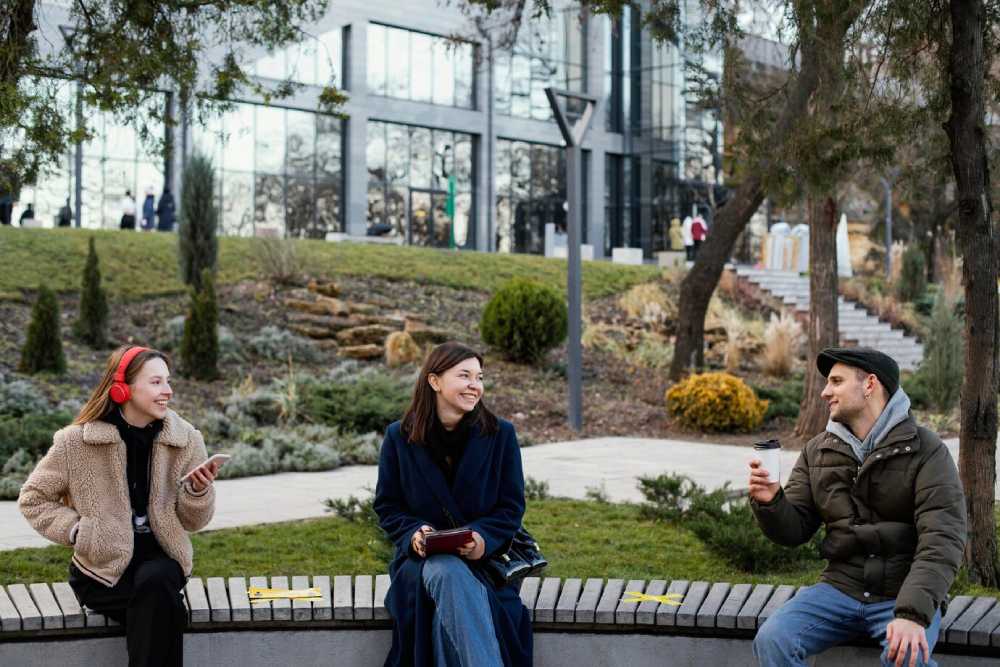In today’s rapidly changing world, neighborhood well-being has become a paramount concern for communities aiming for sustainable and meaningful growth. As cities expand and populations become more diverse, the challenge lies in ensuring that each neighborhood provides the necessary elements to promote and enhance the health, happiness, and overall well-being of its residents. This is not just about physical health but also the emotional, social, and mental well-being of the community.
By implementing strategic measures that prioritize well-being, neighborhoods can thrive, and their residents experience improved quality of life. Here’s a look at five critical measures every neighborhood should consider to enhance public welfare.
Contents
Access to Green Spaces and Nature
The Importance of Green Spaces
Green spaces are invaluable to urban and suburban environments alike. They provide residents with a place to relax, exercise, and socialize, all of which are crucial for mental and physical health. Research consistently shows that access to parks, gardens, and natural landscapes reduces stress and depression while fostering community bonds.
Creating and Maintaining Parks
Providing even small areas of greenery can significantly improve neighborhood ambiance and resident satisfaction. Communities should prioritize the development and maintenance of parks, ensuring they are safe, clean, and accessible to all, including those with disabilities. Initiatives like community garden projects can also boost environmental engagement and sustainability efforts.
Effective Public Transportation
The Role of Transportation in Well-being
Accessible and efficient public transportation is a cornerstone of a thriving neighborhood. It connects residents to essential services, employment, education, and recreational activities, reducing socio-economic disparity. Moreover, using public transport boosts physical activity levels, as it often involves walking or cycling to stations.
Encouraging Use and Improvements
Investment in a reliable and extensive public transportation infrastructure not only reduces traffic congestion but also diminishes carbon footprints, contributing to environmental well-being. Communities should focus on offering affordable, clean, and timely public transportation options, promoting their use as a viable alternative to personal vehicles.
Community Centers and Social Hubs
Enhancing Social Interactions
Community centers serve as crucial hubs for interactions, learning, and cultural exchange. They provide a venue for residents to engage in recreational activities, community meetings, educational programs, and social services. Such spaces are pivotal in building social cohesion and fostering a sense of belonging.
Offering a Range of Activities
To effectively enhance well-being, community centers should offer a diverse array of programs and events that cater to all age groups and interests. From art and music classes to fitness programs and support groups, these centers should evolve to meet the changing needs of their community. Additionally, they should be inclusive spaces that welcome all residents, regardless of cultural or socio-economic background.
Health and Wellness Facilities
Proximity and Accessibility
Access to health care is a fundamental element of well-being. Neighborhoods must ensure residents can easily reach quality health and wellness services. This includes urgent care clinics, maternity wards, mental health services, and specialized care for seniors and children.
Prevention and Education
Educating communities about health issues is equally as important as providing direct medical services. Neighborhoods can strive to host health workshops, vaccination drives, and regular check-up camps. This proactive approach not only enhances the quality of life but also alleviates the long-term burden on healthcare infrastructure.
Safety and Security Measures
Creating a Safe Environment
The perception and reality of safety in a neighborhood are fundamental to the well-being of its residents. Safe neighborhoods reduce stress and anxiety, encouraging residents to engage more actively with their surroundings.
Enhancing Neighborhood Safety
To bolster safety, neighborhoods should focus on well-lit streets, active neighborhood watch programs, and community policing efforts. Community safety is not just about reducing crime rates but also about promoting traffic safety and emergency preparedness. Equipping residents with the knowledge and tools to prevent and respond to emergencies can significantly enhance communal resilience.
Cultivating a Supportive Community Environment
Building a Network
For neighborhoods to truly thrive, fostering a supportive and connected community environment is essential. Residents should feel they are part of a network that supports them during times of need. This sense of community can be cultivated through regular neighborhood events, communication via newsletters or online groups, and local volunteering opportunities.
Encouraging Resident Engagement
A collaborative community is a harmonious one. Encouraging residents to participate in decision-making processes about neighborhood developments and policies can enhance satisfaction and ensure that measures are in line with actual needs and desires.
Implementation and Sustainability of Well-being Measures
Collaborative Efforts
To effectively implement these measures, local governments, community leaders, and residents must work collaboratively. Stakeholders should establish transparent communication channels and embrace innovation in urban planning. Utilizing data and feedback from residents can improve the effectiveness of these measures.
Long-term Commitment
Ensuring sustainable well-being measures requires a long-term commitment from all involved parties. Reevaluating policies and initiatives regularly to meet evolving community needs is crucial. Strategic investments and maintenance plans should be put in place to ensure these valuable resources and services do not falter over time.
All neighborhoods have unique characteristics and challenges. By considering and implementing these five essential measures, communities can build a more inclusive, healthier, and more vibrant living environment for everyone. Prioritizing public well-being should be the cornerstone of all urban development efforts, ultimately leading to robust communities where residents can thrive now and in the future.



